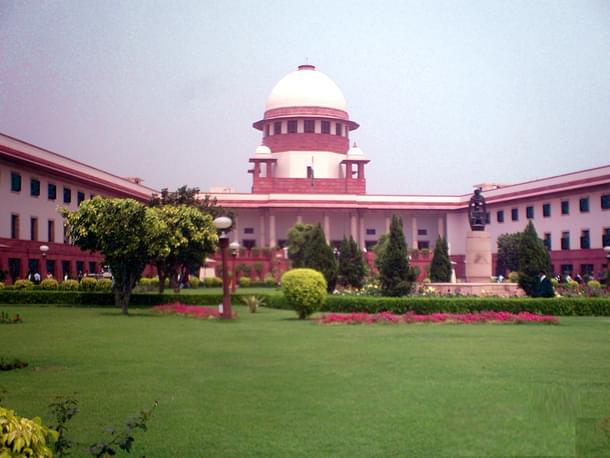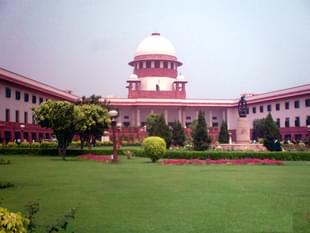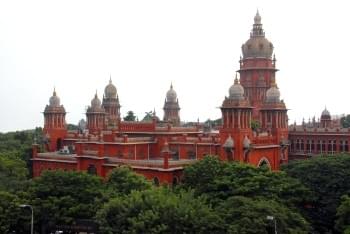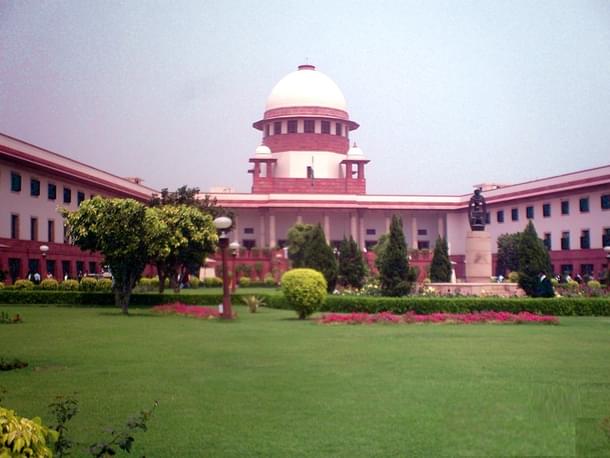Politics
The Judiciary's Accountability Test: Will The NJAC Help?
Kanu Agrawal
May 06, 2015, 11:30 AM | Updated Feb 11, 2016, 09:24 AM IST
Save & read from anywhere!
Bookmark stories for easy access on any device or the Swarajya app.


The CJI’s objection to the NJAC creates an holier-than-thou impression of the courts, which is untenable in our democracy.
The Indian judiciary has been like water in a vessel. It has remained dynamic through times and positioned itself as per the requirements of times. As the polity and the nature of the executive of the country changed, the judiciary repositioned itself to maintain a balance. During the 1950s and 60s, the executive was responsible, reasonable and, to an extent, in a colonial hangover; so the judiciary maintained that the legislature was supreme and acted as an agent of the state to implement and abide by the laws framed in totality.
The polity changed dramatically during the 70s when Emergency was imposed and the executive sought to assume extraordinary powers. The judiciary came to the rescue of our democracy. The courts acted accordingly, moving to protect the freedoms enshrined in the Constitution, increased the scope of the applicability of judicial review over legislative and executive actions of the State and established the doctrine of a basic structure.

Further reaffirming its position in the 80s, the Supreme Court, from being the guardian of the Constitution, became its custodian. Through the 90s and 2000s, during an era of coalition governments, the judiciary observed a lack of urgency within the executive due to a lack of political will, which led to the establishment of PIL jurisprudence and increased involvement in matters earlier considered to be in the domain of the executive. As of now, the Indian polity seems to have taken another decisive turn, and one can only wait for the judiciary to reposition itself and reshape the dynamics of its relationship with the executive.
There are few things which unite the political spectrum of our country. The tussle between the judiciary and the executive over the appointment of judges may sit alongside an armed aggression by a foreign country in a particularly exclusive list. The catchphrase in this debate is “judicial independence”, which is being bandied about in every debate as a trump card to ward off any criticism. From Arun Jaitley in 2003 to Kapil Sibal in 2007 to Ravi Shankar Prasad in 2014, all law ministers have time and again tried to put forward a scheme where the executive has some role to play in appointing the judges of the Supreme Court and High Courts. And every time these claims and aspirations met with stern resistance from the Chief Justice who supported the collegium system and stressed the importance of judicial independence.
This revered concept of independence stands at crossroads even if the claims made by numerous retired Supreme Court judges and senior advocates are not necessarily true, or even partially true. So, if judicial decisions are susceptible to political pressure even after being considerably insulated, does the judiciary need further insulation from the executive? Will this insulation grant complete independence? Is judicial independence a be-all-and-end-all of Indian democracy? Will this independence guarantee a better judiciary? Does such independence come at the cost of transparency and merit?
All these questions were put into perspective by our founding fathers during the Constituent Assembly debates and the mechanism of appointment by the President in consultation with Chief Justice was propounded. This meant the executive and judiciary both have a say in these appointments and there is a certain degree of consensus building to arrive at a decision. Without undermining our founding fathers’ intellect, it must be told that such a mechanism failed to incorporate a system where there could be a solution in case of a standoff and held more of an idyllic view of the situation.

At first, the executive had a big say in the appointment of judges and judiciary played its role of consultation as an advisory power. This primacy of the executive was stretched too far before Emergency when judicial independence was seriously jeopardised by the Indira Gandhi regime’s efforts to make the judges’ political affiliation a determinant for selection and the seniority of some judges being overlooked by the executive. The judiciary fiercely moved to protect its independence and first settled questions of primacy of decision in cases where the executive and the judiciary mutually disagree over a point; the question whether the opinion of the Chief Justice was to be seen as the opinion of the judiciary was raised.
Consequently, over the next 10 years, three Constitutional Bench judgments, famously known as the Judges cases, interpreted the requirement of ‘consultation’ with the Chief Justice before making appointment in the Constitution as “conformation” with the Chief Justice. The phrase “view of the Chief Justice” was extended to be interpreted as the view of the judiciary due to which, four other senior judges were added to the decision-making body. This came to be known as the collegium for the appointment of judges to the higher judiciary. This meant every appointment to the High Courts and the Supreme Court was decided by a body of five senior most Judges of the apex court.
In those times, the insulation of appointments from the realm of the executive and shifting the prerogative to a “collegium” consisting of Supreme Court judges was seen as a bold and dynamic step by the judiciary to escape the tangential trends of the political spectrum.
This insulation was supposed to protect the independence of the judiciary in an aftermath of a serious attack on it. The doctrine of the Basic Structure, the development of PIL jurisprudence and the Collegium system exemplified the judiciary’s powers, responsibilities and activities within the framework of our democracy. The fierce protection of independence has made this possible, but with such extended powers over both the executive and the legislature, the judiciary’s responsibility to be fair, just and equitable and free from the colluding colours of corruption and political influence, takes centrestage.
Judicial independence should not be understood in isolation; it has an alter ego: judicial accountability.
Accountability is a concept lost in our democracy’s bitter struggle against itself. It is this accountability that enshrines our constitutionally developed parameters of checks and balances that run through our constitutional framework, piercing and sewing the complex contours of power amongst the three pillars of our democracy. In this classic struggle of independence versus accountability, highly cherished but subjective concepts of judicial courage and judicial integrity are being tarnished.
While this perceived lack of integrity and courage questions the very existence of the judiciary, one thing the judiciary shouldn’t stand is controversy, for it has been seen for long as a sole pillar standing high in protecting the country from tyranny and injustice. So much so that in India rather than having executive heads, the people’s representatives, who are supposed to bring justice closer to the people, whom they vote for and elect, the general public, has more confidence in judges appointing judges, whom they neither know nor elect!
Events in the recent past have done no justice to this public trust. The Courts, in projecting an image of the saviour of rights and freedoms have time and again interfered in matters where, technically speaking, it ought not. In this journey from judicial activism to supposed judicial heroism, the judiciary has protected its image as the body of redress against the ‘tyranny’ of the executive, but has at the same time, suffered from damage to its image due to its inability to efficiently carry out its basic duties and responsibilities.
The huge backlog in various courts along with the conspicuous selection mechanism has damaged the reputation of the judiciary as a whole with questions being constantly raised over the quality and quantity of judges. This veil of secrecy has been built around a lack of transparency, and this secrecy has time and again arguably bred allegations of nepotism and brotherhood. Basic tenets of the concept of discretion in its judicial understanding and precedents are seen as unruly horses. They require an extremely good man in the saddle. This ‘good man’ may take reasoned decisions, but the very presence of this discretion coupled with lack of transparency raises questions from various quarters.
These questions may be genuine or may be asked with malice, but their presence leads to controversies. With the NJAC in place, the top echelons of the judiciary shall still remain at the forefront, but the executive will now have a role and the decisions will have to be taken through consensus. This shall help future analysis of the judicial appointments in an independent fashion.
A close scrutiny of the working of the collegium system in action reveals that executive interference in judicial appointments could not be avoided. In fact, what the collegium system did was provide protection from public questioning of the political interference. The system created an aura of infallibility and was exempt of any standards of transparency; it applied very limited objective eligibility criterion in judicial appointment and elevations. With the NJAC in place, the presence of a representative of the public/government makes public questioning of a possibly politically motivated appointment possible, without the overhanging threat of the Contempt of Court Act.
The NJAC Act ignores these basic issues of secrecy and unbridled discretion, but does increase the role of the executive from supposedly being a spectator in such appointments to actively participating in the process. To tackle the larger issues of the judiciary, the commission may be a start, but no way the solution to all the issues that plague it.
The considerable reduction of discretion and inclusion of objective criterion of merit for selection by introducing the Indian Judicial Service should be a first step that the commission takes. Various governments since the 60s have pushed the establishment of the Indian Judicial Service, but strict opposition from various High Courts and a lobby of senior lawyers has consistently blocked them.
The courts of certain states vowed to give assent to the proposal but complete adherence by all courts seems a long shot. One can only wish the courts protect their reputation and allow the commission and the All India Judicial Service to take birth. This shall limit discretion and secrecy, and celebrate merit and transparency, keeping the most important pillar of democracy free from frivolous controversy.
The NJAC Act may miss the bull’s eye, but it is a good start. With a Special Constitution Bench being formed to hear the matter regarding the challenge to the NJAC, these are interesting times at the Supreme Court.
Kanu Agrawal is a graduate of the National Law Institute University.





